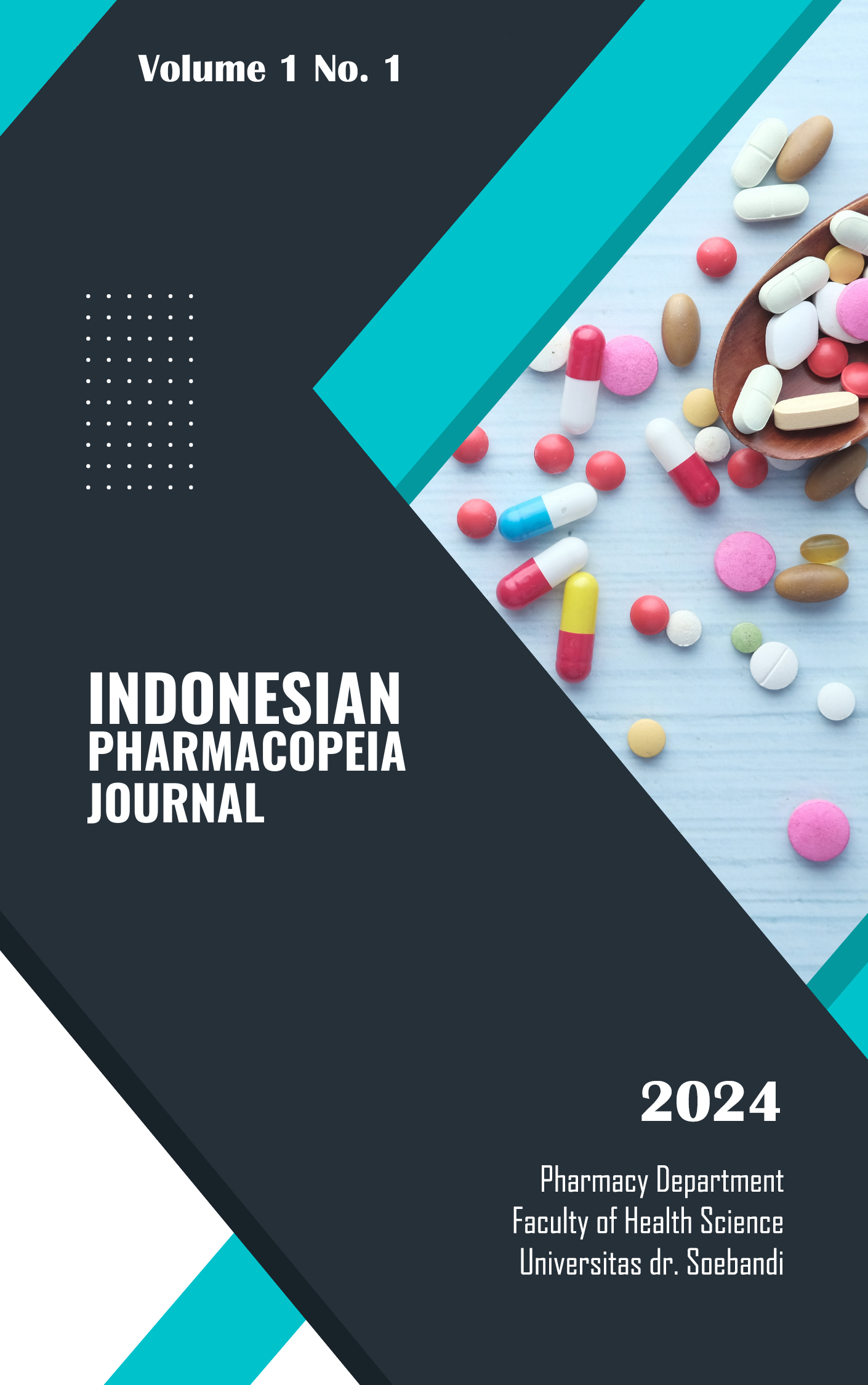FORMULATION AND ANTIBACTERIAL ACTIVITY TEST OF CHINESE BETEL (Peperomia pellucida L. Kuntha) LEAF EXTRACT IN GEL AGAINST Propionibacterium acnes
DOI:
https://doi.org/10.36858/ipj.v1i1.10Keywords:
Peperomia Pellucida L Kunth, Propionibacterium acnesAbstract
Background: Acne is a disease that often occurs due to bacterial infection PropionibacteriumAcne. Chinese betel leaf (Peperomia pellucida L Kunth) is a type of betel which has various chemical compounds such as alkaloids, flavonoids, sponins, tannins, triterpenoids which are useful for curing acne. MAE(Microwave Assited Exstraction) is an extraction process that uses microwave radiation. Wells are a bacterial testing process by placing holes in the media. Method: The design of this research is a laboratory experiment using the MAE method for extraction. Sample of Chinese betel leaf extract(Peperomia pellucida L Kunth).Which is included in the gel preparation formulation 3%, 5%, 7% and tested for physical and antibacterial quality using a well test. Results: The final result of the MAE process was a yield of 60.37g from the sample tested, this result was used in the formulation of gel preparations with concentrations of F1 (3%), F2 (5%), F3 (7%). The results of the research on the physical test showed that all tests met the physical test requirements, and the antibacterial test results showed that the inhibition zone was at K+(kentoconazole)=28.50 mm, F1=8.43mm, F2=8.96mm, F3=10.37mm. Conclusion: There is an effect by adding a concentration of 96% ethanol extract of Chinese betel leaves(Peperomia Pellucida L Kunth)in gel formulations in testing the physical properties of the preparation and antibacterial testing.
References
Afifah Rukmini. (2020). Skrining Fitokimia Familia Piperaceae. Jurnal Biologi Dan Pembelajarannya (JB&P), 7(1),2832.https://doi.org/10.29407/jbp.v7i1.14805
Hafsari, A. R., Tri, C., Toni, S., & Rahayu, I. L. (2015). Uji Aktivitas Antibakteri Daun Beluntas. UJI AKTIVITAS ANTIBAKTERI EKSTRAK DAUN BELUNTAS (Pluchea Indica (L.) LESS.) TERHADAP Propionibacterium Acnes PENYEBAB JERAWAT, 9(1), 142–161.
Marliana,S&Karim,A.(2018).TheEffectiveness of Some Antiacne Facial Cleansing Products Against Propionibacterium acnes. BIOLINK (JurnalBiologiLingkungan,Industri,Kesehatan),5(1),31.http://ojs.uma.ac.id/index.php/biolink/article/view/1668/pdf4
SNI. (1996). Standar Mutu Sabun MandiCair. National Standardization Agency of Indonesia, 1–15.
Wolff, K., A.J, R., & P.S, A. (2011). Fitzpatrick s Dermatology Flashcards.
Downloads
Published
How to Cite
Issue
Section
License
Copyright (c) 2024 Saubah Suud, Jenie Palupi, Amalia Wardatul Firdaus

This work is licensed under a Creative Commons Attribution-ShareAlike 4.0 International License.




